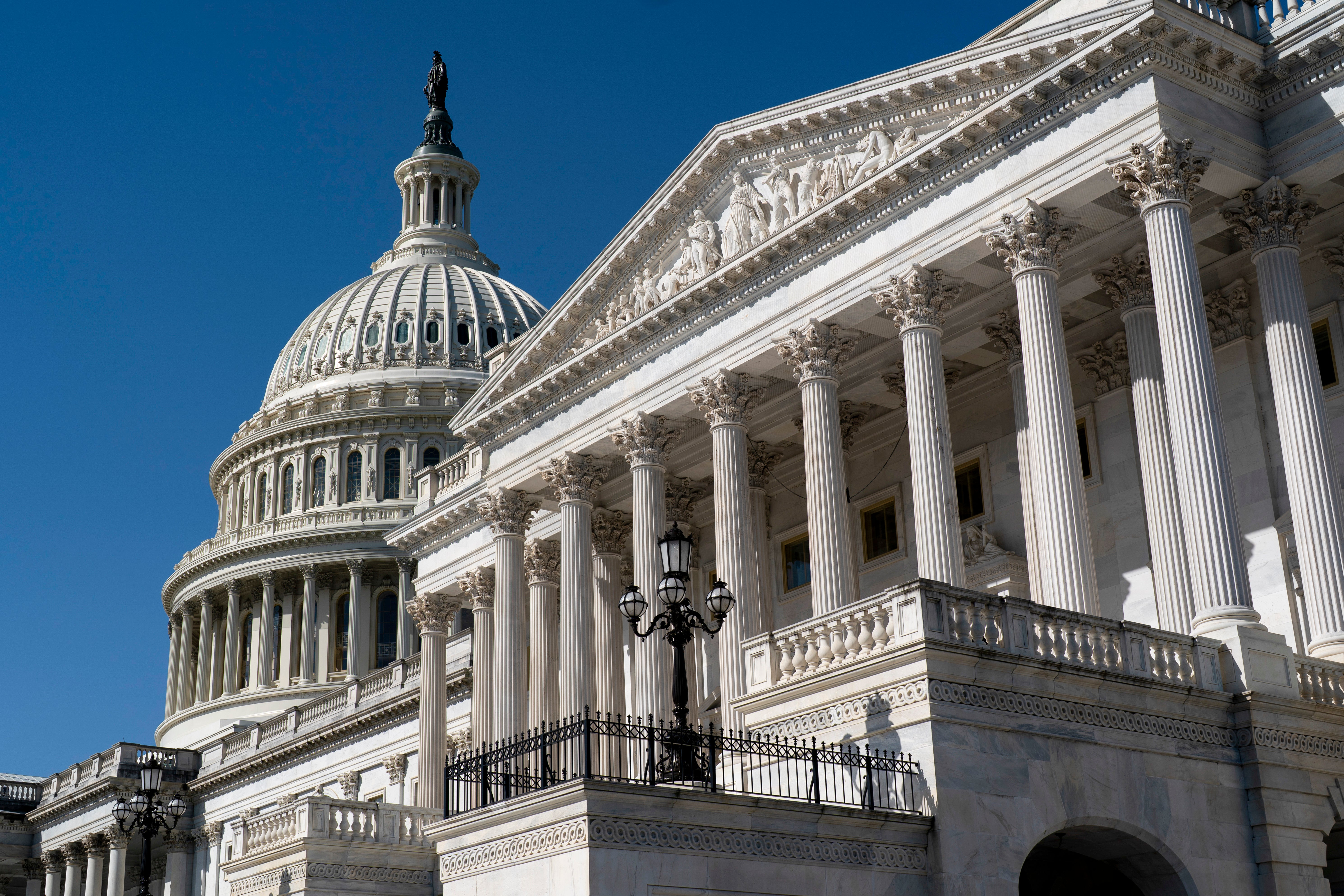FACT FOCUS: Who’s to blame for the national debt? It’s more complicated than one culprit
As political leaders work to reach a deal to raise the debt ceiling, some online have pointed fingers as to who is to blame for the national debt

The U.S. is inching closer to a deadline to raise the debt ceiling or risk defaulting on the nation’s $31 trillion in debt and political leaders have not yet reached a deal to avert such a crisis.
Amid those negotiations, politicians and commentators online have pointed fingers at who they say is to blame for the nation’s exorbitant debt.
One claim circulating widely on social media, prompted by House Minority Leader Hakeem Jeffries, posits that former President Donald Trump contributed more to the debt than any other in the White House occupant in history.
But that isn’t quite right — and experts say the issue is much more nuanced than a political talking point might let on.
Here are the facts.
CLAIM: Trump “ran up more debt than any other President in American history.”
AP’S ASSESSMENT: That’s incorrect. The debt incurred during the Trump era was very high. But in terms of raw dollars, the total debt rose more under former President Barack Obama, with Trump in second place — though Obama held office for two terms, while Trump served one.
There are other ways to slice and dice the numbers, experts say. But more importantly, the debt has been ballooning for years and it’s more complicated than blaming any one leader or party. Trump, for example, was faced with the COVID-19 pandemic, prompting bipartisan support for a massive federal response.
Jeffries offered a more simplistic view when casting blame on the 45th president in a tweet, which was copied in a popular Instagram post shared by Occupy Democrats.
“Trump ran up more debt than any other President in American history,” the post reads. “He wants Republicans to force a dangerous default if they don’t get their way. We cannot let right-wing extremists hold our economy hostage.”
Jeffries’ office didn’t provide a response to an inquiry asking how the measure was calculated.
But in terms of all presidents, the Trump years did not record the most debt added — although they did add a lot.
Looking at historical federal debt data by fiscal year, the total gross U.S. debt was about $19.5 trillion at the end of fiscal year 2016, which ended several months before Trump took office, said G. William Hoagland, senior vice president at the Bipartisan Policy Center. That rose to about $26.9 trillion at the end of fiscal year 2020, or a $7.4 trillion increase, just before Trump left office.
The debt added under Obama’s two terms, however, amounted to about $9.5 trillion.
There are some caveats: Those figures are not adjusted for inflation. A federal fiscal year begins in October, so there is some overlap when administrations change. And the total debt includes debt held by the public, which accounts for most of the debt, but also debt owed by one part of the government to another.
There are also different ways to analyze the data.
Evaluating only full one-term presidencies, for example, the rise under Trump may well be on paper the largest increase. But the increase under former President George H. W. Bush — about $1.4 trillion — represented a larger percentage increase than under Trump, Hoagland noted.
And some economists prefer to view the national debt as a percentage of the U.S. gross domestic product, or GDP, because it indicates the ability of the country to handle its debt.
“Compare it to a household,” explained Eugene Steuerle, co-founder of the Urban-Brookings Tax Policy Center. “The higher the household’s wages, the more it can pay off its debt.”
Looking at it that way, the gross debt as a percentage of GDP reached an all-time high of nearly 128% at the end of Trump's tenure, according to the historical federal data. That said, it's represented more than 100% of GDP since 2013; that burden in relation to the size of the economy was previously unseen since World War II.
But the debt accumulated under specific presidents isn’t just a result of their own policies — it reflects decisions made by their predecessors as well as by members of Congress.
“The point is that fiscal policy reflects joint action by Congress and the president,” said David Primo, a University of Rochester professor of political science and business administration. Statements like Jeffries’ imply presidents have sole control over fiscal policy, he noted.
Similarly, Hoagland said: “All presidents inherit spending from previous administrations and in turn they create spending for the future president.”
The cost of programs like Social Security and Medicare continue to drive up the debt, as do factors beyond a president’s control, like COVID-19 or the recession inherited by Obama.
“As a budget expert, what pains me is that partisan bickering about who is to blame for the debt obscures an important truth: both parties have abdicated their budgetary responsibilities,” Primo said, noting that about two-thirds of the debt has been incurred since 2001.
___
This is part of AP’s effort to address widely shared misinformation, including work with outside companies and organizations to add factual context to misleading content that is circulating online. Learn more about fact-checking at AP.